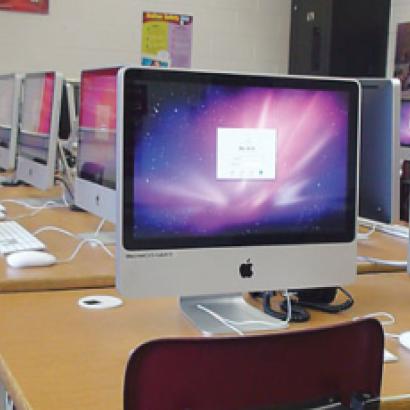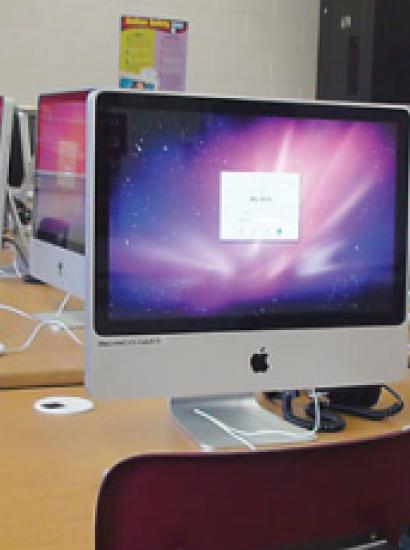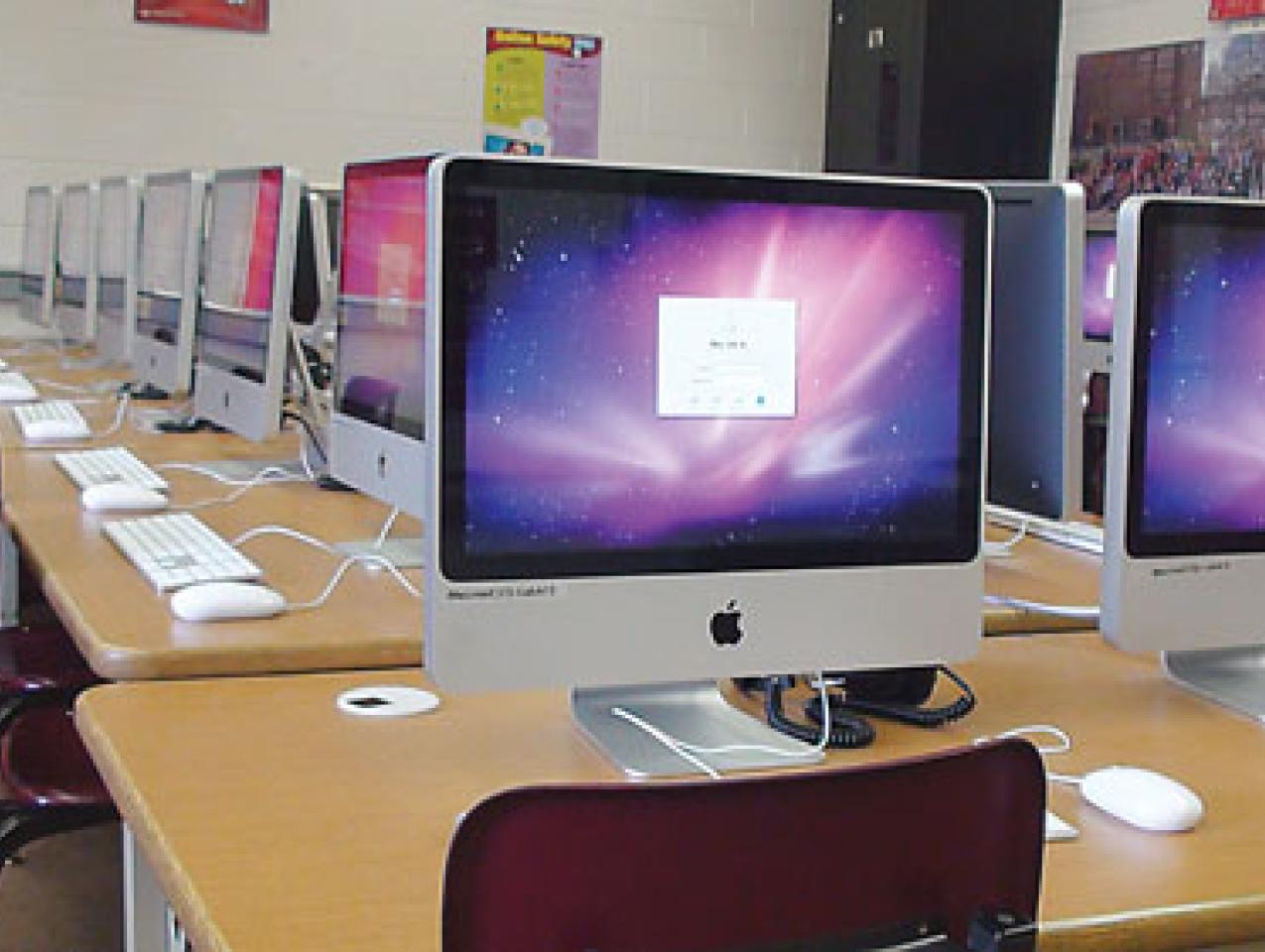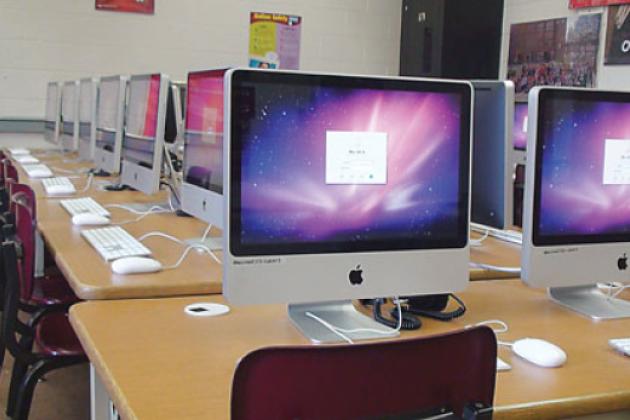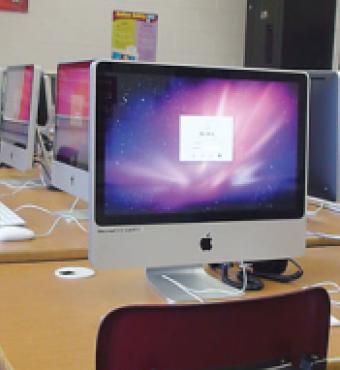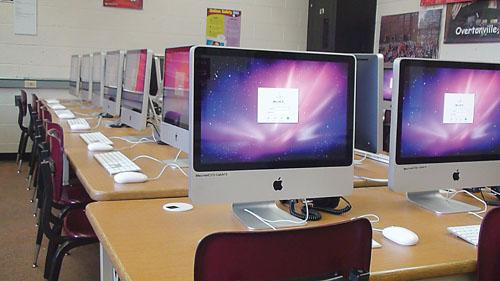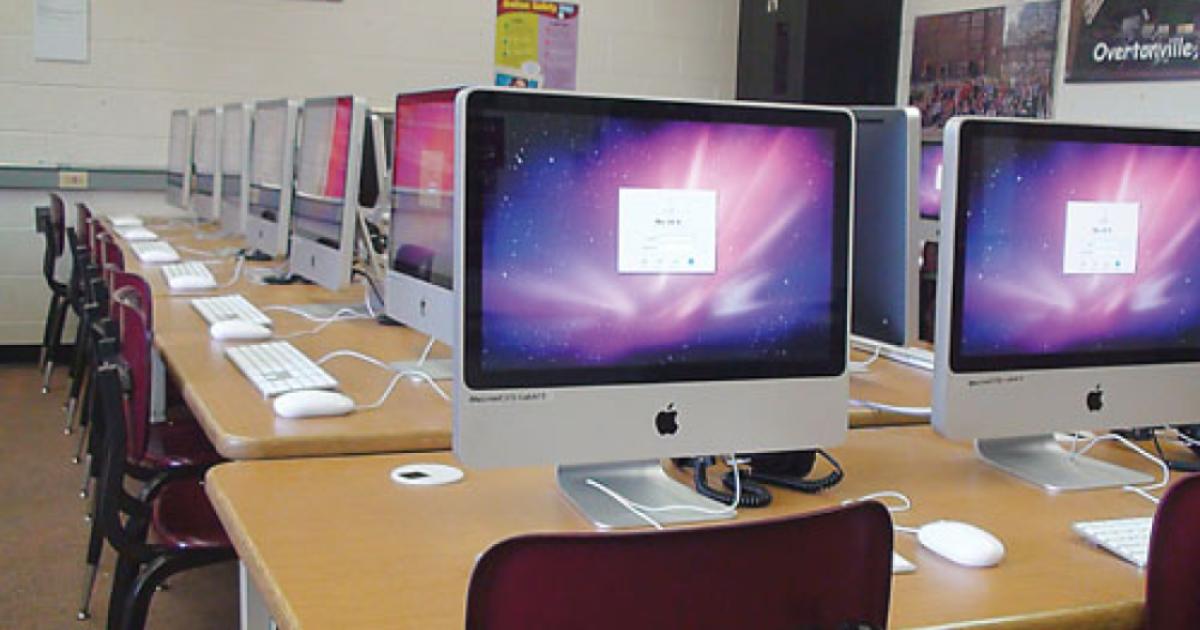- Education
- K-12
Not long ago, I doubted that computers, cell phones, and the Internet would make any more difference in American education than television had. Ringing in my ears was a comment by the late Ralph Tyler that the sole technological advance in a century that had really affected classrooms was the overhead projector because, he wisecracked, it was “the only one that the teacher could use while still keeping an eye on her students.”
Computers, I figured, would continue to be useful to scientists and engineers and others with complex calculations to make. Cell phones would function like traditional telephones, only portable. The Internet (whether or not Al Gore had anything to do with it) was for e-mailing and such. And “information technology” was sort of like engineering, a field for wonky college students wanting to write computer code. K–12 education might benefit marginally from bits of all this but mainly would sail on like a clipper ship of yore, powered by the same winds that had always propelled it.
Well, I was wrong. But this confession isn’t just another paean to the potential of online learning. That’s real, of course. What has struck me is the sheer number of contemporary education problems to which technology offers at least a partial solution—but only if we can picture it holistically, not simply as a tool for doing one thing or another.
Let me illustrate with five major-league challenges in today’s K–12 reform world, noting in advance that this could easily be a list of twenty-five.
- Assessments. Old-fashioned assessments consume much valuable class time, are either simpleminded in construction or labor-intensive to evaluate, rarely work well across a broad range of students (it takes far too many questions to differentiate at the low and high ends as well as in the middle), and have a turnaround too slow to yield useful information when you really need it. A major reason for the failure of “public school choice” under No Child Left Behind, for instance, is that nobody knew before each August or September whether their kids had the right to change schools that year.
Computer-adaptive assessments combined with computerized scoring, including open-response and even essay-type questions, could go a long way toward salving all those bruises.
- Teacher evaluations. It’s understandable why teachers don’t want to be judged on the basis of a single year-end test or by the difference in student scores between a pair of year-end tests. It’s unfair and inadequate in a dozen ways, and even more so once you get outside the realm of English language arts and math in grades three through eight. Indeed, it’s no better than having the principal pop in for a few minutes once or twice a year.
Technology, however, makes it possible to record, retrieve, and evaluate entire portfolios of student work, daily and weekly learning outcomes, and a host of teacher practices and behaviors, all of them able to be analyzed, reviewed, and discussed at multiple points during the school year—indeed over multiple years.
- Weighted student funding (WSF). As with most major reforms of school finance, doing WSF right entails complex formulas, oft-changing allocations of money (when a kid shifts schools, for example, or moves to the next grade, or her needs change), sophisticated building-level budgeting, and the integration of dollars from multiple sources that carry different requirements.
Technology can’t solve all those problems—deciding what weight to assign to which conditions, for example—but it can surely simplify the managing and tracking of dollars, the amalgamation of amounts from different programs, and the budget challenges that arise at every level.
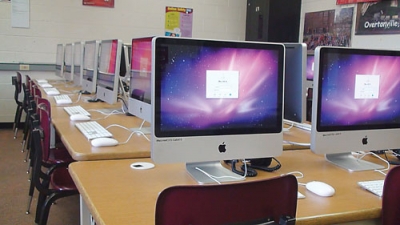
Computer labs such as this one in a North Carolina elementary school are a common approach to using high technology in the classroom. The future is likely to bring more revolutionary ways of measuring students’ skills, teachers’ performance, the effectiveness of new methods and curriculums, and where education money is best spent.
- High-quality choices for every child. What does school choice mean in rural America? For a child who is unusually gifted in, say, physics, but also wants to play the violin? For a parent whose kid is theoretically free to change schools but who cannot access reliable information by which to evaluate the options? For a youngster who had to drop out to work at a day job or help with baby care but who wants to complete that diploma?
Technology doesn’t guarantee that good information will lead families to make educationally sound school choices, but at least it removes the “how was I to know?” excuse for bad choices. It can beam lessons to kids who live on mountaintops or accompany their parents to Thailand. It can be accessed around the clock. It can augment the course offerings of brick-and-mortar schools. And it creates the possibility of changing schools just by typing a different URL into one’s browser.
- Parent engagement. How do we draw parents more deeply into the education of their daughters and sons and turn them into partners with teachers and counselors? It’s not easy—but instant, painless communication between school and home is a big help. So is the ability of Mom and Dad to access their child’s homework assignment, see her test results, retrieve a weekly report on what she did and didn’t learn, even watch her behavior in class in real time (or when convenient).
One could go on, as these examples are just slices of the possible. I didn’t even go into individualization of instruction, special education, ways of saving money, or myriad other potential benefits of technology when used properly in the K–12 context.
Note, though, that pulling off this kind of transformation isn’t like adding a new program to school as we know it. It’s no bandage; it’s more like a heart-lung transplant. Which is exactly how we tend not to think about education reform. And this is exactly what engenders fear and loathing among traditional educators, whether because major surgery is scary, or they’re worried about their jobs, or they’re just not that comfortable with technology.
Realizing the promise of technology for American K–12 education will be hard. Misused, technology could even worsen some of today’s education woes. But if we approach it comprehensively, the payoff will justify the struggle. With apologies to Ralph Tyler, it will make the overhead projector, with all the change it wrought, look like a paperclip.








